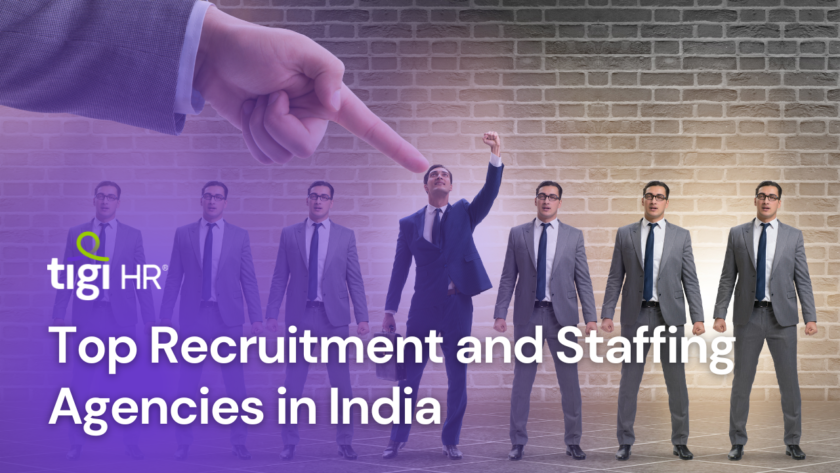In the relentless pursuit of success and productivity, the modern workplace often overlooks a critical aspect of its most valuable resource – the mental well-being of its employees. Mental health in the workplace is no longer a secondary concern; it’s a pressing issue that requires immediate attention. In this comprehensive article, we’ll delve deep into the topic of mental health awareness in the workplace, exploring its significance, challenges, and practical solutions.
Understanding Mental Health
To embark on the journey of mental health awareness in the workplace, it’s crucial to start with the basics.
The Basics of Mental Health
Mental health encompasses a person’s emotional, psychological, and social well-being. It influences how people think, feel, and act, shaping their ability to handle stress, relate to others, and make choices. At its core, mental health is essential for every stage of life, from childhood and adolescence through adulthood.
Common Mental Health Disorders
Understanding the most prevalent mental health disorders is essential for recognizing and addressing them in the workplace:
Depression: A pervasive feeling of sadness and hopelessness, often accompanied by a loss of interest in activities.
Anxiety: An excessive worry or fear that can interfere with daily life.
Bipolar Disorder: Characterized by extreme mood swings, from manic highs to depressive lows.
Stigma and Its Impact
One of the most significant barriers to mental health awareness is stigma. Stigma involves negative stereotypes, prejudice, and discrimination directed at individuals with mental health conditions. This societal stigma can seep into the workplace, discouraging employees from seeking help or disclosing their struggles. The fear of being stigmatized can worsen mental health issues and hinder recovery.
The Significance of Mental Health in the Workplace
Mental health isn’t just a personal matter; it profoundly impacts workplaces as well.
Mental Health and Productivity
The mental health of employees is intricately linked to workplace productivity. When employees experience mental health issues, it can lead to decreased productivity, absenteeism, and high turnover rates. Stressed and anxious employees find it challenging to focus on their tasks and are more likely to make errors. Addressing mental health concerns is, therefore, a strategic move for organizations aiming to optimize productivity.
The Cost of Ignoring Mental Health
Ignoring mental health concerns in the workplace comes at a significant cost. Employers bear substantial expenses related to untreated mental health issues, including increased healthcare costs, reduced productivity, and higher employee turnover. The World Health Organization estimates that depression and anxiety cost the global economy approximately $1 trillion per year in lost productivity.
Legal and Ethical Considerations
Apart from the financial aspects, there are legal and ethical considerations that compel organizations to prioritize mental health. Laws require employers to provide a safe and healthy work environment, which includes addressing mental health concerns. Neglecting mental health can lead to legal consequences, tarnishing a company’s reputation and brand.
Recognizing Mental Health Issues
Identifying mental health issues is the first step toward providing support.
Identifying Common Signs and Symptoms
Recognizing signs of mental health issues can be challenging, as they vary from person to person. However, common signs and symptoms may include:
Changes in behavior, such as increased irritability or withdrawal.
Persistent feelings of sadness or hopelessness.
Decreased concentration and decision-making abilities.
Noticeable changes in eating and sleeping habits.
A loss of interest in previously enjoyed activities.
Physical symptoms like headaches or stomachaches.
Tools for Self-Assessment
Promoting self-awareness is crucial in the workplace. Self-assessment tools and questionnaires can help individuals gauge their mental well-being. For instance, tools like the Patient Health Questionnaire (PHQ-9) and Generalized Anxiety Disorder 7 (GAD-7) can be used by employees to assess their mental health status. Encouraging employees to perform these self-assessments regularly can help them monitor their mental well-being and seek help when needed.
The Role of Managers and Colleagues
Managers and colleagues play pivotal roles in supporting mental health awareness.
Managers’ Responsibilities
Managers are often the first point of contact for employees facing mental health challenges. Their responsibilities include:
Recognizing signs of distress or changes in an employee’s behavior.
Approaching employees with empathy and non-judgment.
Offering support and referring employees to available resources.
Training managers to handle these situations sensitively and effectively is essential for creating a supportive environment.
Colleagues’ Influence
Colleagues can contribute significantly to mental health awareness. Encouraging open communication and a culture of support reduces stigma. When employees feel safe discussing their mental health concerns with coworkers, it can lead to early intervention and a more inclusive workplace.
Mental Health Initiatives in the Workplace
Promoting mental health awareness in the workplace requires a strategic approach.
Employee Assistance Programs (EAPs)
Employee Assistance Programs (EAPs) are a valuable resource for employees facing mental health challenges. EAPs offer confidential counseling and resources to employees and their families. They provide a safe and accessible space for employees to seek help without fear of judgment or disclosure to their employers.
Training and Education
Educational initiatives play a pivotal role in mental health awareness. Training programs can equip employees with the knowledge and skills to recognize and support colleagues facing mental health issues. Key components of such programs include:
Raising awareness about mental health disorders and their prevalence.
Reducing stigma through education and empathy-building exercises.
Providing guidance on how to approach and support a colleague in crisis.
Creating a Supportive Work Environment
Fostering a mentally healthy workplace goes beyond policies and programs. It’s about creating an environment where employees feel valued, supported, and safe.
Leadership’s Role in Fostering Mental Health Awareness
Leaders within an organization have a significant role in setting the tone for mental health awareness. When leaders prioritize their mental health and well-being, it sends a powerful message to the entire organization. Leading by example, they encourage employees to seek help when needed and show that mental health is not a sign of weakness.
Encouraging Open Conversations
Promoting open conversations about mental health is pivotal in reducing stigma. Employers can create safe spaces where employees feel comfortable discussing their mental health concerns. Initiatives like “mental health check-ins” or designated “mental health days” can encourage open dialogues.
Promoting Work-Life Balance
Balancing work and personal life is crucial for mental well-being. Employers can support work-life balance by:
Encouraging regular breaks and vacations.
Offering flexible work arrangements, such as remote work or flexible hours.
Providing access to wellness programs that promote physical and mental health.
Coping Strategies and Self-Care
Equipping employees with coping strategies and encouraging self-care is essential.
Stress Management Techniques
Stress is a common trigger for mental health issues. Teaching employees stress management techniques can help them better handle workplace pressures. These techniques include:
Mindfulness and meditation exercises.
Time management and prioritization skills.
Physical activities like yoga or exercise.
Promoting Healthy Lifestyles
Healthy eating, regular exercise, and adequate sleep all contribute to mental health. Employers can support healthy lifestyles by:
Offering gym memberships or fitness classes.
Providing access to nutritious food options in the workplace.
Encouraging employees to take regular breaks and prioritize sleep.
Seeking Professional Help
While self-care strategies are valuable, it’s equally important to encourage employees to seek professional help when needed. Access to mental health professionals and resources should be readily available and destigmatized.
Success Stories and Case Studies
Concrete examples of organizations leading the way in mental health initiatives can inspire others.
Companies Leading the Way in Mental Health Initiatives
Numerous companies have taken bold steps to prioritize mental health in the workplace. For instance:
Google’s “G|Thrive” program focuses on emotional intelligence, mindfulness, and resilience.
Unilever offers a “Mental Fitness” program to its employees, emphasizing stress management and resilience-building.
These companies serve as role models for others, showcasing how mental health awareness can be integrated into workplace culture effectively.
Personal Stories of Overcoming Workplace Mental Health Challenges
Real-life stories from employees who’ve faced and conquered mental health challenges can be powerful tools for inspiring change. Sharing personal narratives humanizes the issue and encourages employees to seek help. These stories demonstrate that mental health challenges are not insurmountable and that recovery is possible with the right support.
Challenges and Barriers
Recognizing the challenges and barriers in addressing mental health in the workplace is essential to overcoming them.
Addressing the Stigma
Stigma surrounding mental health remains one of the most significant barriers to progress. Overcoming stigma requires a multi-pronged approach:
Education and awareness campaigns to reduce stereotypes.
Creating a culture of empathy and understanding.
Celebrating individuals who share their mental health journeys.
Accessibility to Mental Health Resources
Access to mental health resources can be a significant barrier, especially for employees in remote or underserved areas. Employers should strive to make mental health services accessible to all employees, regardless of their location.
Privacy and Confidentiality Concerns
Employees may be hesitant to seek help if they fear their privacy won’t be maintained. Employers must prioritize privacy and ensure that employees’ confidentiality is respected when seeking mental health support.
Future Trends and Innovations
The landscape of mental health in the workplace is evolving rapidly.
The Impact of Remote Work on Mental Health
The COVID-19 pandemic accelerated the adoption of remote work, which has both positive and negative implications for mental health. While remote work offers flexibility, it can also lead to isolation and blurred boundaries between work and personal life. Employers must adapt to these changes by providing additional support and resources for remote employees.
Technology and Mental Health Support
Technology is playing an increasingly significant role in mental health support. Apps and digital tools offer resources for stress management, mindfulness, and tracking mental health. Additionally, telehealth services have made professional mental health support more accessible, allowing employees to connect with therapists from the comfort of their homes.
Predictive Analytics for Early Intervention
Data analytics are being used to identify employees at risk of mental health issues. Predictive models can analyze employee behavior and flag potential concerns, enabling early intervention and support. While this approach raises privacy concerns, when used ethically, it can be a powerful tool for promoting mental health.
Practical Tips for Employees and Employers
Let’s explore actionable steps for both employees and employers to promote mental health awareness and well-being in the workplace.
Implementing Mental Health Policies
Employers should actively develop and implement comprehensive mental health policies that cover:
Anti-stigma campaigns and education.
Access to mental health resources and services.
Employee training on recognizing and addressing mental health concerns.
Employee Self-Care Strategies
For employees, taking proactive steps to care for their mental health is vital:
Prioritize self-care through regular exercise, adequate sleep, and a balanced diet.
Seek support from colleagues or supervisors when facing challenges.
Utilize available mental health resources, such as EAPs.
Fostering a Culture of Inclusivity
Promoting diversity and inclusion as part of mental health initiatives is essential. Recognize that mental health intersects with various aspects of diversity, including race, gender, and LGBTQ+ identities. Tailor support and resources to meet the unique needs of all employees.
The Ongoing Journey of Mental Health Awareness
Mental health awareness in the workplace is not a one-time effort but an ongoing journey. To maintain a mentally healthy workplace, organizations must continuously adapt and evolve their strategies. Here, we’ll emphasize the importance of sustaining and expanding mental health initiatives.
Regular Evaluation and Adaptation
Periodic evaluations are essential to assess the effectiveness of mental health initiatives. Employers should collect feedback from employees to understand their needs better. Conducting surveys or focus groups can provide valuable insights into what is working and what needs improvement.
Once feedback is gathered, organizations should be willing to adapt and refine their mental health programs accordingly. This adaptive approach ensures that initiatives remain relevant and continue to meet the evolving needs of the workforce.
Measuring Impact
Quantifying the impact of mental health initiatives is crucial for organizations seeking to justify their investments. Employers can track key performance indicators (KPIs) related to mental health, such as reduced absenteeism, improved productivity, and increased employee engagement.
Additionally, tracking metrics related to employee participation in mental health programs and utilization of available resources can help organizations understand how well they are reaching their workforce.
Leadership’s Ongoing Role
Leaders within organizations must remain steadfast in their commitment to mental health awareness. Their actions and attitudes have a direct impact on workplace culture. Continuously demonstrating a commitment to mental health encourages employees to do the same.
Leaders should also actively participate in mental health programs and initiatives, setting an example for the rest of the organization. By doing so, they foster a culture where everyone feels comfortable prioritizing their mental well-being.
Incorporating Mental Health into Organizational Values
To truly embed mental health awareness into the workplace, it should become part of an organization’s core values. This goes beyond lip service; it means that mental health is integrated into every facet of the organization’s operations.
For example, during the hiring process, employers can assess candidates for their alignment with the organization’s commitment to mental health. During performance reviews, discussions about mental well-being can be included as part of the employee’s growth and development plan.
Employee Resource Groups (ERGs)
Employee Resource Groups, or ERGs, can play a vital role in promoting inclusivity and support for employees with specific mental health concerns. ERGs focused on mental health issues, such as anxiety or depression, can provide a safe space for employees to connect, share experiences, and offer peer support.
The Role of HR and Mental Health First Aid
Human Resources (HR) departments have a pivotal role in championing mental health initiatives. HR professionals can:
Ensure that mental health resources and support are readily available and communicated effectively to all employees.
Provide training and guidance to managers on how to handle mental health-related issues sensitively and appropriately.
Organize workshops and seminars to educate employees about various aspects of mental health.
Implement Mental Health First Aid programs, training selected employees to provide initial support to colleagues in crisis.
Legal and Ethical Considerations: Staying Compliant
In many regions, legal frameworks continue to evolve to protect employees’ mental health rights. Employers must stay informed about these regulations to ensure compliance. Non-compliance can lead to legal repercussions and damage to a company’s reputation.
Legal considerations may include:
Providing reasonable accommodations for employees with mental health conditions.
Safeguarding the privacy and confidentiality of employees seeking mental health support.
Ensuring that the workplace is free from discrimination related to mental health issues.
By staying abreast of legal and ethical considerations, organizations can demonstrate their commitment to mental health awareness and avoid potential pitfalls.
Conclusion: A Collective Responsibility
In the quest for mental health awareness in the workplace, every individual—employers, managers, employees—holds a piece of the puzzle. It’s a collective responsibility to create an environment where mental well-being is valued, and support is readily available.
The significance of mental health in the workplace cannot be overstated. It affects the individual lives of employees and the overall health of organizations. Prioritizing mental health is not only morally right but also strategically sound.
As we navigate the challenges of the modern workplace, let us remember that fostering a mentally healthy environment is not a luxury but a necessity. It’s an investment in human capital, productivity, and the future success of organizations. It’s a commitment to creating workplaces where employees can thrive, both personally and professionally.
In the journey toward comprehensive mental health awareness, we have explored the basics of mental health, common disorders, and the insidious impact of stigma. We’ve examined the significance of mental health in the workplace, the cost of ignoring it, and the legal and ethical considerations. We’ve delved into recognizing mental health issues, practical strategies, and real-world success stories. We’ve navigated the challenges, explored future trends, and provided actionable tips.
TIGI HR: Pioneering Recruitment Agency with Exponential Follower Growth
Celebrating a momentous achievement, TIGI HR has reached a significant milestone, surpassing 200K+ followers on their LinkedIn page. Standing out in the competitive realm of recruitment agencies, TIGI HR leads in follower growth compared to renowned competitors. Ethically driven and technologically sound, the agency’s dedication to providing top-quality recruitment services to national and international clients has earned them an ever-expanding community. With 12+ franchises across India and a clientele exceeding 1000, TIGI HR’s exponential growth showcases their commitment to excellence in the global talent market.
Find trusted recruitment agencies : Click here





